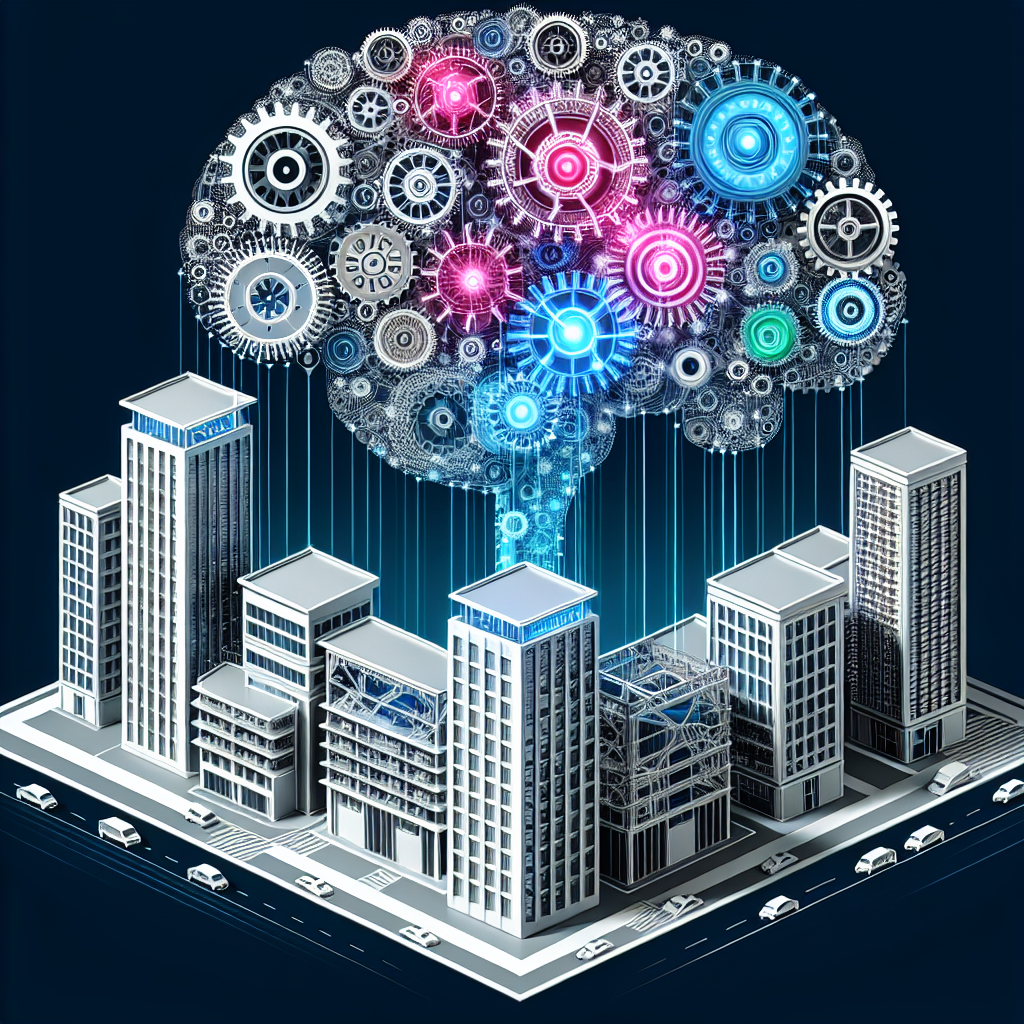Artificial intelligence (AI) is revolutionizing the way buildings are managed and optimized for energy efficiency, cost savings, and occupant comfort. AI-driven building system optimization uses advanced algorithms and machine learning techniques to analyze data from sensors, control systems, and other sources to make real-time adjustments to heating, cooling, lighting, and other building systems. This proactive approach allows buildings to operate more efficiently, reduce energy consumption, and minimize maintenance costs.
There are many benefits to implementing AI-driven building system optimization, including:
1. Energy savings: AI algorithms can analyze historical data and real-time information to identify patterns and trends in energy consumption. By optimizing building systems based on occupancy levels, weather conditions, and other factors, AI can help reduce energy usage and lower utility bills.
2. Cost savings: By optimizing building systems, AI can help reduce maintenance costs by identifying equipment that needs servicing before it fails. This proactive approach can also extend the life of equipment, reducing the need for costly replacements.
3. Improved occupant comfort: AI-driven building optimization can adjust heating, cooling, and lighting levels based on occupancy patterns and preferences. This can help create a more comfortable and productive work environment for building occupants.
4. Sustainability: By reducing energy consumption and optimizing building systems, AI can help buildings operate more sustainably and reduce their carbon footprint. This is not only good for the environment but can also enhance the reputation of the building owner or operator.
5. Data-driven decision-making: AI-driven building system optimization provides valuable insights into building performance and energy usage. By analyzing this data, building owners and operators can make informed decisions about how to further improve efficiency and reduce costs.
6. Scalability: AI-driven building optimization can be scaled to buildings of all sizes, from small offices to large commercial buildings. This flexibility allows building owners and operators to implement AI solutions that meet their specific needs and budget constraints.
7. Real-time monitoring and control: AI algorithms can monitor building systems in real-time and make adjustments as needed to optimize performance. This proactive approach can help prevent equipment failures and ensure that building systems are operating at peak efficiency.
FAQs:
Q: How does AI-driven building system optimization work?
A: AI-driven building system optimization uses algorithms and machine learning techniques to analyze data from sensors, control systems, and other sources. These algorithms can identify patterns and trends in energy consumption, occupancy levels, and other factors to make real-time adjustments to building systems.
Q: What types of building systems can be optimized using AI?
A: AI-driven building optimization can be used to optimize heating, cooling, lighting, ventilation, and other building systems. These systems can be adjusted based on occupancy levels, weather conditions, and other factors to maximize energy efficiency and occupant comfort.
Q: How can AI-driven building optimization save money?
A: By optimizing building systems, AI can help reduce energy consumption, lower utility bills, and minimize maintenance costs. This can result in significant cost savings for building owners and operators over time.
Q: Is AI-driven building optimization suitable for all types of buildings?
A: AI-driven building optimization can be implemented in buildings of all sizes, from small offices to large commercial buildings. This flexibility allows building owners and operators to tailor AI solutions to meet their specific needs and budget constraints.
Q: How can building owners and operators get started with AI-driven building system optimization?
A: Building owners and operators can start by conducting an energy audit to identify areas where energy savings can be achieved. They can then work with a trusted AI provider to implement a customized solution that meets their specific needs and goals.
In conclusion, AI-driven building system optimization offers numerous benefits, including energy savings, cost savings, improved occupant comfort, sustainability, data-driven decision-making, scalability, and real-time monitoring and control. By leveraging the power of AI, building owners and operators can optimize their building systems to operate more efficiently, reduce energy consumption, and enhance occupant comfort. Implementing AI-driven building system optimization is a smart investment that can lead to long-term cost savings and environmental benefits.

